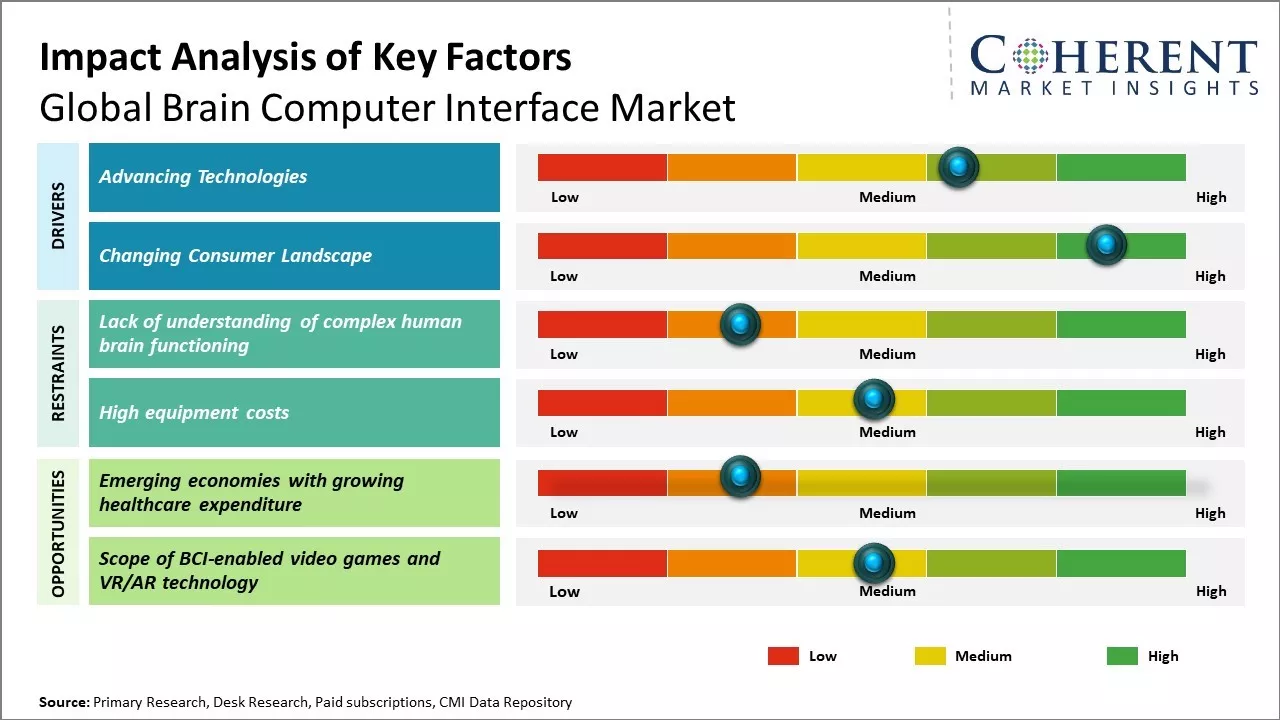The global brain computer interface market is estimated to be valued at USD 2.40 Bn in 2025 and is expected to reach USD 6.16 Bn by 2032, exhibiting a compound annual growth rate (CAGR) of 14.4% from 2025 to 2032.

To learn more about this report, Request sample copy
Rapid technological advancements in neural imaging, machine learning algorithms, and miniaturization of electrode arrays are enabling more accurate and intuitive BCIs. This is leading to a rise in adoption across application areas like healthcare and gaming.
The increasing applications of BCIs in restoring motor functions for paralyzed patients, new form of communication for locked-in patients, and emergence of practical applications in gaming and virtual reality are driving the demand for BCIs. Additionally, increasing funding from both private and public organizations for the development of high performance and affordable BCIs is anticipated to fuel the market growth over the forecast period.
Advancing Technologies
One of the major drivers for the growth of the global brain computer interface market is the tremendous advancements happening in the field of neuroscience and brain research technologies. Scientists and researchers are continuously working on decoding the complex language of neurons and understanding how electrical and chemical signals are processed in the brain. This improved understanding of brain functioning is enabling the development of more sophisticated brain monitoring devices and neural interfaces. A key area of development is in the miniaturization of electrode and sensor technologies that can interface directly with the brain. Traditional electrode devices used to be quite bulky and invasive. However, newer micro and nano-scale electrodes can now be implanted on the surface of the brain or even within brain tissue without requiring surgery. Some researchers are working on developing ultrafine threads containing hundreds of electrodes that can safely penetrate the brain. Such high resolution and minimally invasive interfaces will significantly boost the adoption of BCIs. For instance, in March 2025, according to Bionews, Inc., a new collaboration led by researchers at Mass General Brigham aims to advance brain-computer interfaces (BCI) for people with neurological diseases or brain injuries like ALS. The implantable Brain-Computer Interface Collaborative Community (iBCI-CC) seeks to accelerate the development, safety, and accessibility of BCI devices by bringing together stakeholders, including the U.S. FDA. This initiative addresses clinical, regulatory, and coverage challenges to improve patient’s access to BCI technology.
Joining thousands of companies around the world committed to making the Excellent Business Solutions.
View All Our Clients